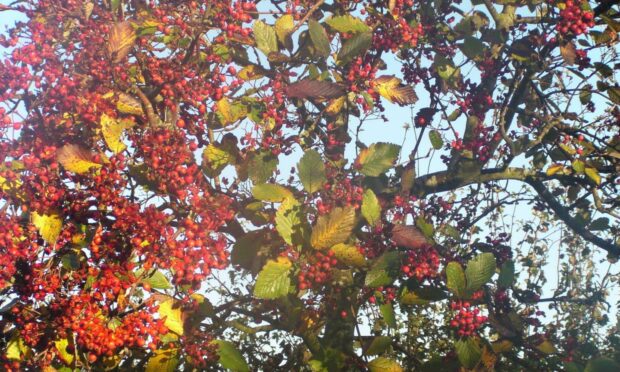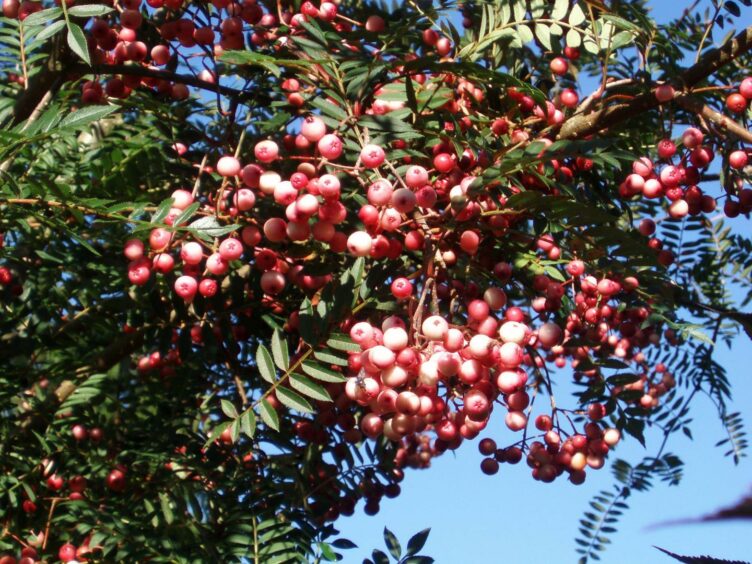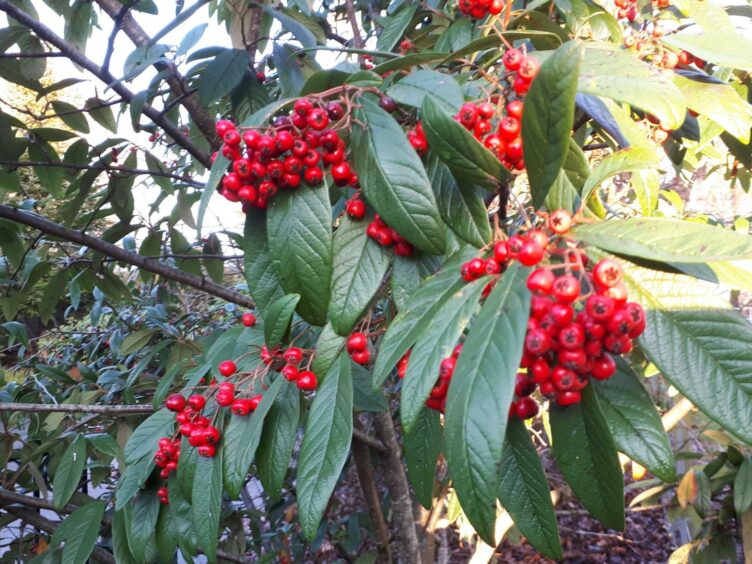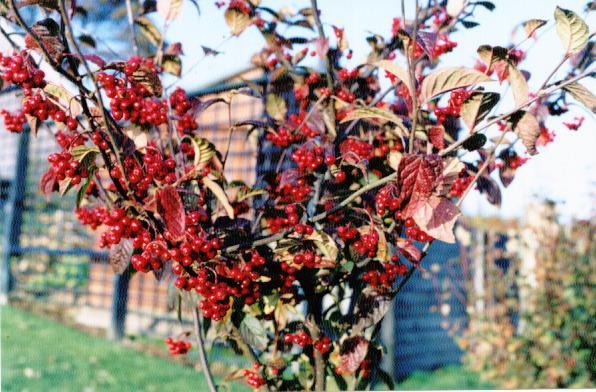By jingo, the geese are certainly on the move.
Every morning of late, I have watched great flocks of them passing overhead, heading off to winter quarters no doubt.
Winter is nigh, snow is forecast and that should serve to remind us that we ought to be looking to enhance the food availability for our native birds and any passing migrants who care to stay awhile.
Pecking order
It is fascinating to watch the pecking order. Not which birds come first but what berries and fruits they take a fancy to first.
I reckon that various forms of Rowan come before they move to Cotoneaster Pyracantha etc and it is something that has fascinated me for years.
In our last, much bigger garden, the blackbirds started on the Rowan – Sorbus commixta before the berries had fully turned red.
I’ve seen the tree with six or seven of them going at it as if there was to be no tomorrow.
Thrushes
Meanwhile thrushes tend to prefer another Rowan – Sorbus hupehensis – which has white berries suffused with pink.
It would be reasonable to assume that, like apples, different species or varieties will ripen and therefore become palatable at different stages, and although the colour may not change over a few months, the taste certainly does.
Mention of apples takes me to the crab apples in our present garden, whilst the little haw-like fruits on Malus sargentii went like “snaw aff a dyke” early on, the damson-sized, yellow/red fruits of butterball are left to fall to the ground; perhaps they are slow to become palatable.
Garden centres
Some of our well-stocked garden centres, whilst majoring on the Christmas theme, also regularly highlight the need to feed the birds.
Never one to try to reinvent the wheel, I am happy to quote from authoritative sources and recently one such reminds us that: “As the frosty nights are drawing in, it is important that wildlife enthusiasts and gardeners remember to set up and clean bird boxes and hang and fill bird feeders in anticipation of the lean months ahead.”
That point about cleaning is vitally important and I would add to his list bird tables and water baths.
Our feathered friends are prone to disease just like ourselves, good hygiene is therefore a priority.
Severe weather
We should remember that by supporting the birds throughout the winter, we help them to survive periods of severe weather to be in good condition to breed successfully in the spring.
That says it all, because there have been reports of some well-known species decreasing dramatically in numbers and that does not bode well for a healthy, balanced natural environment.
Let’s face it, there is a duty for all of us to contribute to the biodiversity of our environment, we do well by maintaining a well-stocked garden, let’s go that extra mile by looking after the birds too.
Lime and lawns
Should you ever lime the lawn? I could answer that by saying sometimes it might be efficacious to do so but in my experience only under exceptional circumstances.
It comes back to this business of pH, which indicates the level of acidity or alkalinity of a soil. Most of the finer grasses like the fescues grow best in acid conditions.
Remember that acidity and alkalinity is measured by a logarithmic scale called pH.
Neutral is pH7, numbers going progressively below that indicate soils becoming more acid and conversely going above pH7 are alkaline.
If the pH in a lawn were to fall below pH4, there might be a case for liming and this is the time of year to do it.
The only point to make about soils over pH7 is that they tend to encourage coarser grasses and very active worm activity leading to problems with worm casts.
Some would argue that liming will help to control moss; sorry, I don’t believe it is as easy as that.
Soil conditioner
In the old days, agriculturists used basic slag, a by-product of the iron and steel industry, as a soil conditioner.
This material has a liming effect but it is also quite high in phosphate hence its popularity.
Customarily, it was applied to grass fields about this time of year and therefore allowed to wash in over the winter.
If it is judged that you do need to lime a piece of fine grass, use the finest grade of ground limestone that you can obtain and apply in dry conditions.
If rain is not imminent, it would be wise to water it in gently. How much should you apply? Aha, that is the $64,000 question.
Start with maybe half a “gowpinfae” per sq yd. (Regular readers will understand!)



